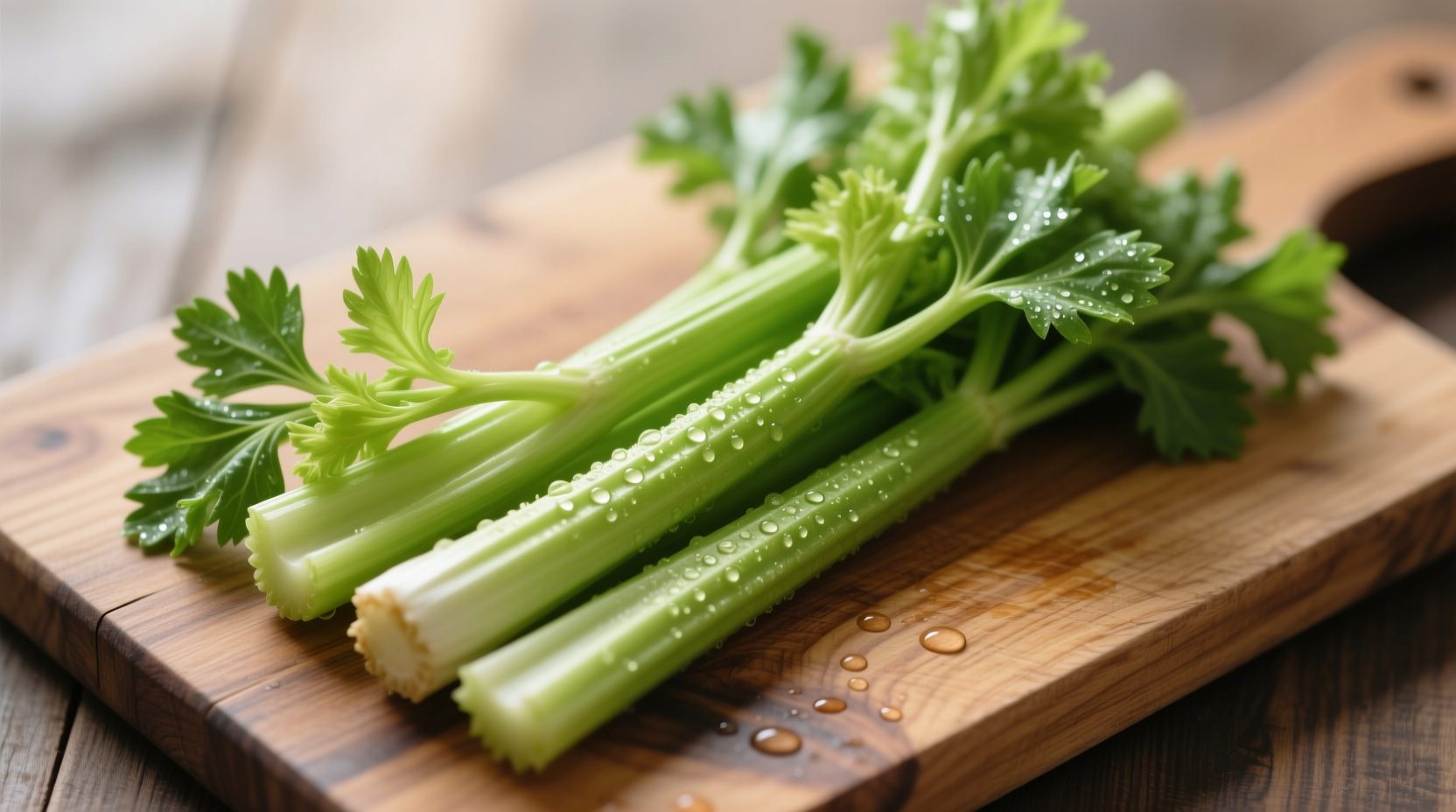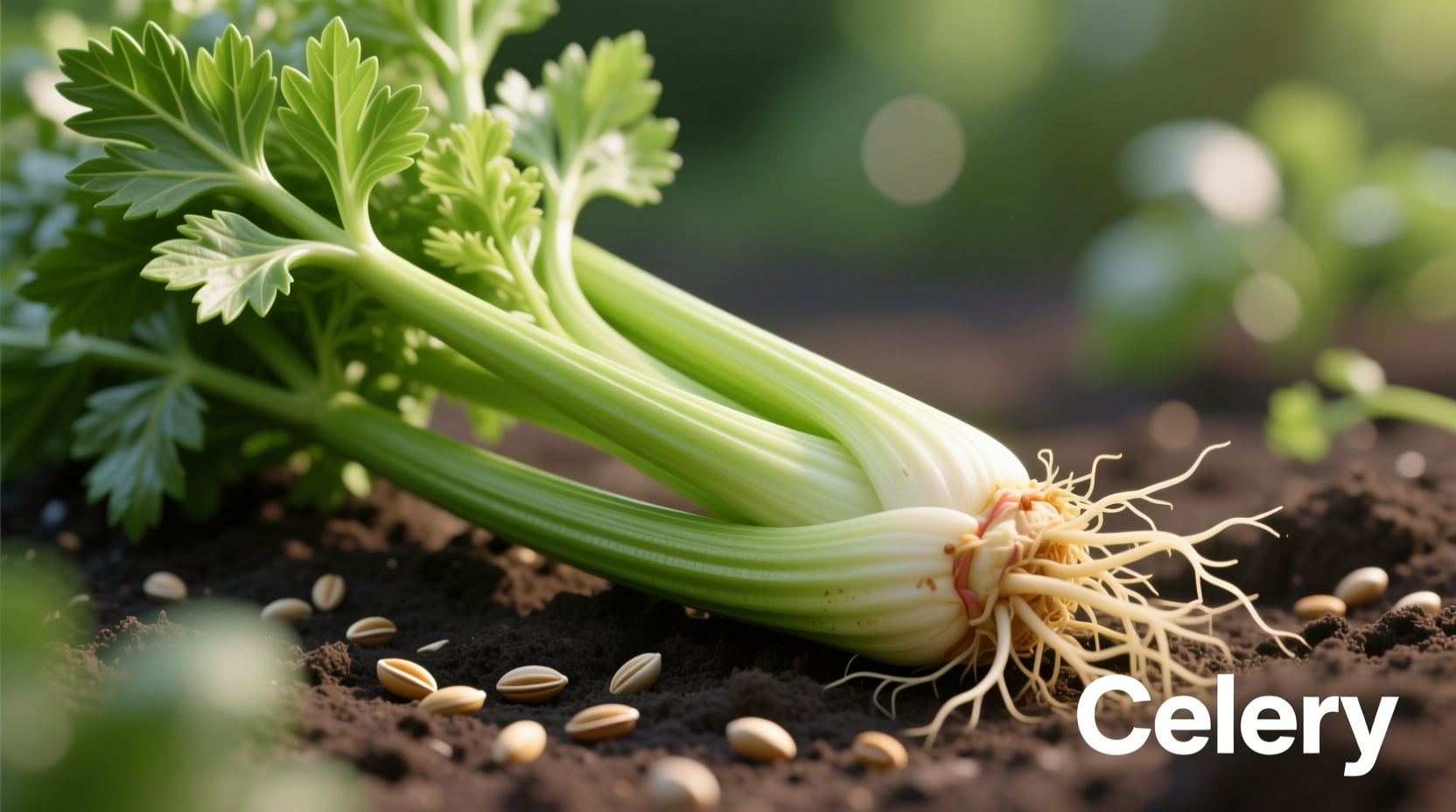When you're standing in the produce section wondering is celery a vegetable for your meal planning, the answer matters for both nutrition and cooking. Understanding this classification helps home cooks make informed decisions about ingredients and their culinary applications.
Why the Confusion About Celery's Classification?
The question is celery a vegetable arises from the fundamental difference between botanical science and culinary tradition. Botanists classify plants based on their biological structure and reproductive functions, while chefs and nutritionists categorize ingredients by how they're used in cooking and their nutritional profiles.
Botanically speaking, what we eat as celery isn't technically a vegetable at all—it's the petiole, or leaf stalk. However, in culinary practice, celery absolutely functions as a vegetable. This dual identity creates understandable confusion for home cooks and nutrition enthusiasts alike.
Botanical Reality: What Celery Actually Is
From a plant science perspective, celery (Apium graveolens) belongs to the Apiaceae family, which includes carrots, parsley, and fennel. The part we consume is specifically the petiole—the thick, fibrous stalk that connects the leaf blade to the plant's stem.
According to the American Society for Horticultural Science, celery develops these distinctive stalks as part of its growth cycle, with the plant producing hollow, ribbed petioles that store water and nutrients. The edible portion contains vascular bundles that transport fluids throughout the plant, explaining celery's characteristic stringy texture.
| Classification System | Celery's Designation | Key Characteristics |
|---|---|---|
| Botanical | Petiole (leaf stalk) | Part of the leaf structure, not a root, stem, or fruit |
| Culinary | Vegetable | Used as a savory ingredient in cooking, not sweet like fruit |
| Nutritional | Non-starchy vegetable | Low in calories, high in water content, provides vitamins K and C |
| USDA Food Group | Vegetable | Categorized with other non-starchy vegetables in dietary guidelines |
Culinary Tradition: Why Chefs Call Celery a Vegetable
In the kitchen, celery functions as a foundational vegetable. Professional chefs worldwide recognize celery as one of the "holy trinity" in Cajun cooking (with onions and bell peppers) and as part of the French "mirepoix" (with onions and carrots). These culinary traditions have classified celery as a vegetable for centuries, long before modern botanical classification systems existed.
The Academy of Nutrition and Dietetics explicitly includes celery in their vegetable category, noting its role in providing essential nutrients while adding flavor and texture to dishes. When meal planning, registered dietitians consistently group celery with other vegetables for dietary recommendations.
Nutritional Profile: How Celery Compares to Other Vegetables
Nutritionally, celery aligns with vegetable characteristics. According to USDA FoodData Central, one cup of chopped celery (about 100g) contains:
- 16 calories
- 3g carbohydrates
- 1.6g fiber
- 32% of daily vitamin K needs
- 5% of daily vitamin C needs
- Over 95% water content
These nutritional characteristics place celery firmly in the non-starchy vegetable category alongside cucumbers, zucchini, and bell peppers—not with fruits, grains, or proteins. The high water content explains why some people mistakenly believe celery "isn't a real vegetable," but water-rich produce like lettuce and spinach are universally accepted as vegetables.

Practical Implications for Home Cooks
Understanding that celery is considered a vegetable affects several practical aspects of cooking and meal planning:
- Meal composition: When following recipes that call for "vegetables," celery counts toward your vegetable portions
- Nutritional tracking: Apps and diet plans correctly categorize celery as a vegetable
- Gardening: While botanically a biennial plant, gardeners treat celery as a vegetable crop
- Cooking techniques: Celery responds to vegetable-specific cooking methods like sautéing, roasting, and braising
Addressing Common Misconceptions
Misconception: "Celery isn't a vegetable because it's mostly water."
Reality: Many vegetables have high water content—cucumbers (95%), lettuce (95%), and zucchini (94%) are all unquestionably classified as vegetables.
Misconception: "Celery is just a seasoning, not a vegetable."
Reality: While celery adds flavor, it also provides substantial volume and nutrients in dishes. The entire stalk is consumed as a vegetable component, unlike true seasonings like salt or pepper.
Misconception: "If it's not a root, stem, or fruit, it can't be a vegetable."
Reality: Culinary vegetables include diverse plant parts—leaves (spinach), flowers (broccoli), and even seeds (peas). The culinary definition focuses on usage, not botanical structure.
Historical Context of Celery Classification
Culinary historian Sarah Johnson explains: "Celery's classification journey reflects broader patterns in how we categorize food. Ancient Greeks and Romans used wild celery primarily as medicine and for ceremonial purposes. When celery was domesticated in the 17th century, European cooks immediately embraced it as a vegetable for soups and stews. The botanical classification came much later, creating this modern-day confusion."
This historical perspective helps explain why the culinary definition remains dominant in everyday usage despite the botanical technicality. For thousands of years, humans have treated celery as a vegetable in their cooking traditions.
Conclusion: Embracing Both Perspectives
So, is celery a vegetable? The practical answer for anyone cooking, shopping, or meal planning is yes—it's unquestionably a vegetable in culinary, nutritional, and everyday contexts. The botanical distinction matters primarily to plant scientists, not to those using celery in the kitchen.
Understanding this dual classification helps you navigate recipes, nutritional information, and gardening advice with confidence. Whether you're building a mirepoix, tracking your vegetable intake, or planning your garden, treating celery as a vegetable aligns with both tradition and practical application.
Frequently Asked Questions
Is celery technically a vegetable from a botanical perspective?
Botanically, celery is classified as a petiole (leaf stalk), not a vegetable. Vegetables aren't a botanical category—botanists classify plants by their reproductive structures. What we eat as celery is specifically the leaf stalk of the Apium graveolens plant.
Why do nutritionists consider celery a vegetable?
Nutritionists and culinary professionals classify celery as a vegetable because it's used as a savory ingredient in cooking, provides similar nutritional benefits to other vegetables, and fits within vegetable-based dietary patterns. The USDA includes celery in the vegetable group for dietary guidelines.
Can I count celery toward my daily vegetable intake?
Yes, absolutely. Health organizations including the Academy of Nutrition and Dietetics count celery toward your daily vegetable recommendations. One cup of chopped celery counts as one serving of vegetables in most dietary planning systems.
What makes celery different from other vegetables botanically?
Unlike root vegetables (carrots), stem vegetables (asparagus), or fruit vegetables (tomatoes), celery consists of petioles—the leaf stalks. This structural difference explains the botanical classification confusion, though culinarily it functions identically to other vegetables.











 浙公网安备
33010002000092号
浙公网安备
33010002000092号 浙B2-20120091-4
浙B2-20120091-4